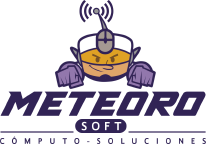Understanding a Balance Sheet With Examples and Video Bench Accounting
You will need to tally up all your assets of the company on the balance sheet as of that date. Noncurrent or long-term liabilities are debts and other non-debt financial obligations that a company does not expect to repay within one year from the date of the balance sheet. This means that the assets of a company should equal its liabilities plus any shareholders’ equity that has been issued. Investors, business owners, and accountants can use this information to give a book value to the business, but it can be used for so much more.
Learn More About the Financial Statements
The balance sheet provides an overview of the state of a company’s finances at a moment in time. It cannot bookkeeping gilbert give a sense of the trends playing out over a longer period on its own. For this reason, the balance sheet should be compared with those of previous periods. By looking at the sample balance sheet below, you can extract vital information about the health of the company being reported on.
How is the Balance Sheet used in Financial Modeling?
- No, all of our programs are 100 percent online, and available to participants regardless of their location.
- Currently, Garth holds a $12,000 share in the business, a little shy of half its total equity.
- Shareholders’ equity reflects how much a company has left after paying its liabilities.
Bill’s quick ratio is pretty dire—he’s well short of paying off his liabilities with cash and cash equivalents, leaving him in a bind if he needs to take care of that debt ASAP. He doesn’t have a lot of liabilities compared to his assets, and all of them are short-term liabilities. Let’s look at each of the balance sheet accounts and how they are reported. Includes non-AP obligations that are due within one year’s time or within one operating cycle for the company (whichever is longest). Notes payable may also have a long-term version, which includes notes with a maturity of more than one year.
As noted above, you can find information about assets, liabilities, and shareholder equity on a company’s balance sheet. If they don’t balance, there may be some problems, including incorrect or misplaced data, inventory or exchange rate errors, or miscalculations. It’s important to note that how a balance sheet is formatted differs depending on where an organization is based.
Which of these is most important for your financial advisor to have?
A company’s balance sheet is comprised of assets, liabilities, and equity. Assets represent things of value that a company owns and has in its possession, or something that will be received and can be measured objectively. Liabilities are what a company owes to others—creditors, suppliers, tax authorities, employees, etc. They are obligations that must be paid under certain conditions and time frames. The balance sheet reflects the carrying values of a company’s assets, liabilities, and shareholders’ equity at a specific point in time. Balance sheets are important financial statements that provide insights into the assets, liabilities, and shareholders’ equity of a company.
Some companies will class out their PP&E by the different types of assets, such as Land, Building, and various types of Equipment. Different accounting systems and ways of dealing with depreciation and inventories will also change the figures posted to a balance sheet. Because of this, managers have some ability to game the numbers to look more favorable. Pay attention to the balance sheet’s footnotes in order to determine which systems are being used in their accounting and to look out for red flags. Regardless of the size of a company or industry in which it operates, there are many benefits of reading, analyzing, and understanding its balance sheet.
Unfortunately, he’s addicted to collecting extremely rare 18th century guides to bookkeeping. Until he can get his bibliophilia under control, his equity will continue to suffer. Finally, since Bill is incorporated, he has issued shares of his business to his brother Garth. Currently, Garth holds a $12,000 share in the business, a little shy of half its total equity. Shaun Conrad is a Certified Public Accountant and CPA exam expert with a passion for teaching. After almost a decade of experience in public accounting, he created MyAccountingCourse.com to help people learn accounting & finance, pass the CPA exam, and start their career.
Shareholders’ Equity
However, there are several “buckets” and line items that are business report example almost always included in common balance sheets. We briefly go through commonly found line items under Current Assets, Long-Term Assets, Current Liabilities, Long-term Liabilities, and Equity. A company usually must provide a balance sheet to a lender in order to secure a business loan.
Conceptually, a company’s assets refer to the resources belonging to the company with positive economic value, which must have been funded somehow. For information pertaining to the registration status of 11 Financial, please contact the state securities regulators for those states in which 11 Financial maintains a registration filing. Although balance sheets are important, they do have their limitations, and business owners must be aware of them.
It’s important to remember that a balance sheet communicates information as of a specific date. While investors and stakeholders may use a balance sheet to predict future performance, past performance is no guarantee of future results. While current assets can be converted into cash within a year, liquidating non-current assets, such as fixed assets (PP&E), can be a time-consuming process. If the fundamental accounting equation is not true in a financial model—i.e.
